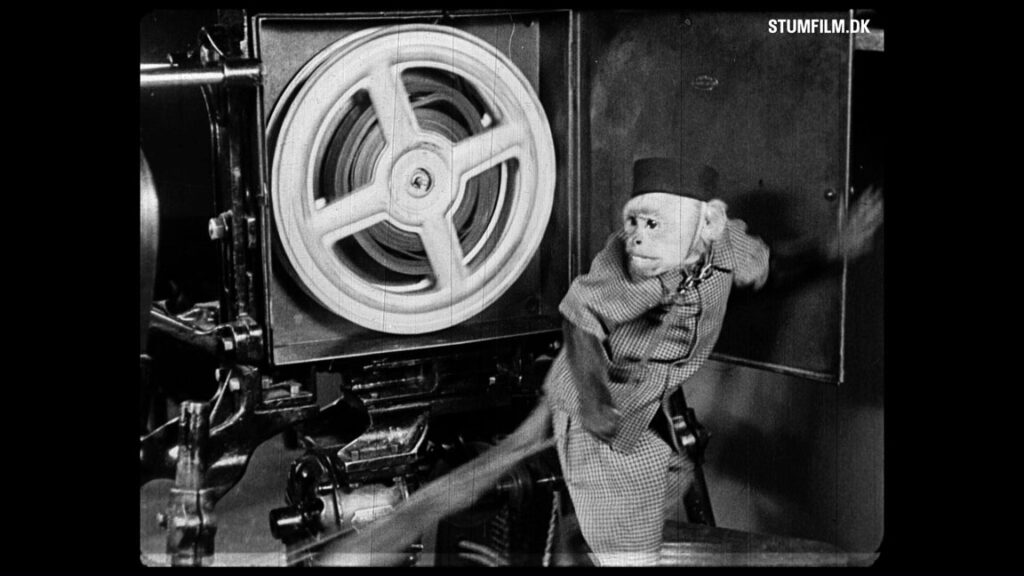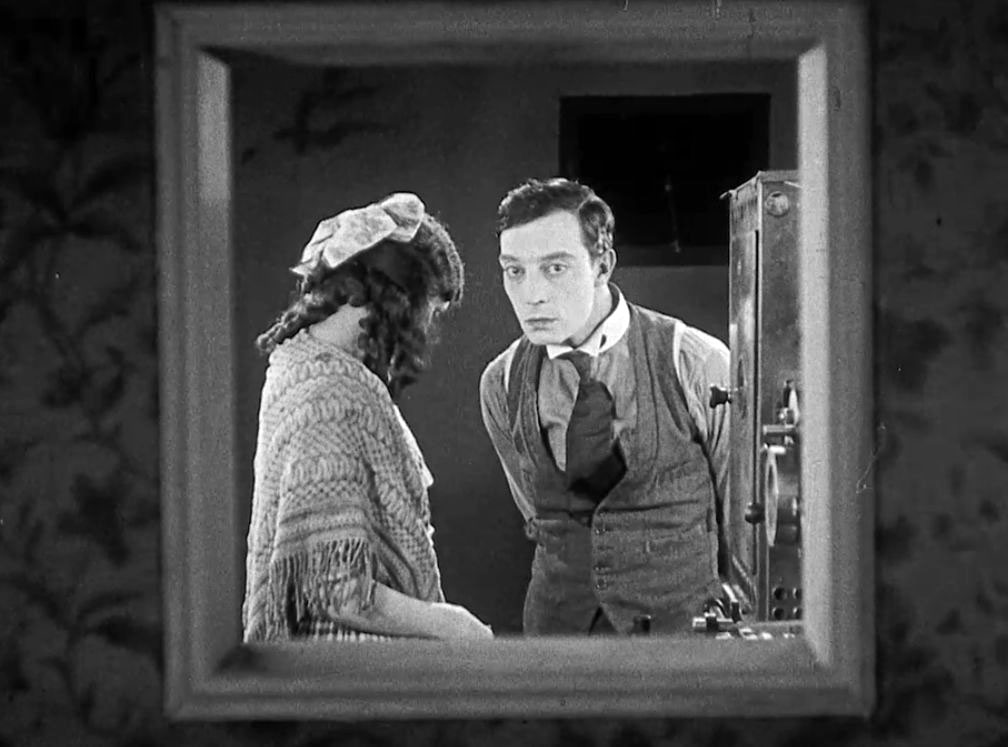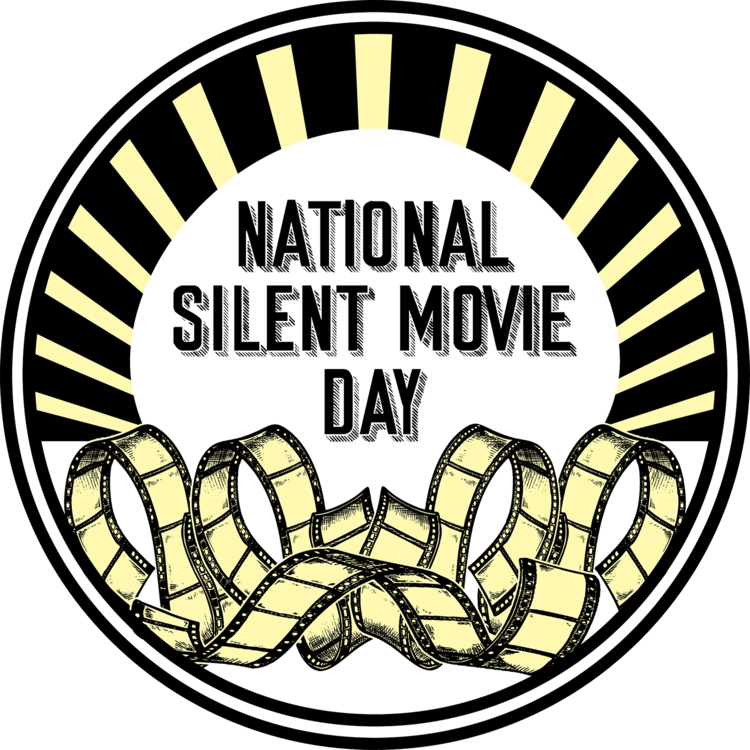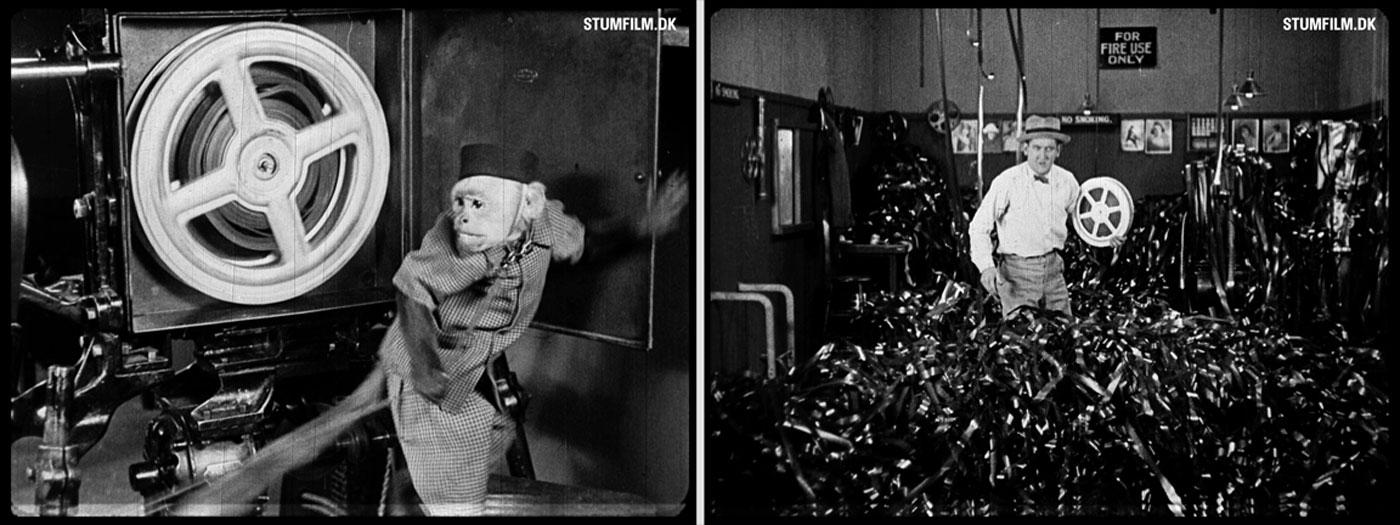I have a two-sentence slide about a third of the way in to my “Undercranking: the Magic Behind the Slapstick” lecture/demo. I show the first sentence and read it — “What is the correct speed for silent film?” — and then reveal the second sentence: “Please…no fistfights.” It gets a knowing laugh every time.
It’s gotten that laugh when I gave the presentation at Club TCM during the TCM Classic Film Festival, at the Library of Congress’ “Mostly Lost” workshop, at the Museum of Modern Art, at the classic film convention Cinefest, and more. I give this talk to the students in the silent film course I’ve been teaching at Wesleyan University and, of course, it doesn’t get the laugh, but that’s because my students are learning about and viewing Silent Film for the first time during the semester. And I explain the joke to them.
Everyone has an opinion about what speed silent films should be shown at. A lot of the time it’s subjective. Often, those subjective opinions match the history of projection speeds during the so-called “silent” era.
There are a lot of terms that get used and thrown about. Silent speed. Sound speed. Natural motion. “Running around like the Keystone Kops”. Too fast. Too slow.
My inserting that “right speed” slide in my PowerPoint is the title card that leads off my discussing what I’ve found in my research. Which is that there was no one single frames-per-second, feet-per-minute, minutes-per-reel projection speed for silent movies. What I have found, and have been discussing in this blog for the past ten posts or so, is that projection speed was always faster than taking (filming) speed, and that this was known by and expected by the people who made the films.
In the Beginning…
What is often referred to as “silent speed”, which hovers in the territory of 16 to 18 frames per second (please…no fistfights), was a speed that motion pictures were shown at. Up through the early or mid 1910s. Basically.
I’ve written about where the term “silent speed” comes from and why I think it’s inadvertently applied to all Silent Film here.

Because projectors were hand-cranked initially, there was no way to enforce an intended speed. This continued even after motors were added to projectors beginning in the mid-1910s. Sure, there were some projectionists who prided themselves on keep their hand on the rheostat and adjusting a film scene by scene, just as there were operators just ran the film at one rate to fit a show schedule or because it was just easier. A speed was not locked in until it had to be when synch-sound was added to movies.
As Maurice Costello discovered when he began acting in moving pictures in the late ‘aughts, films might be shown at an even faster rate than the one mentioned above. Not every reel was exactly 1000 feet of film, and even once feature-length took hold in the mid-‘teens, most films were 5 reels. But not all. And exhibitors needed to be able to guarantee a certain number of shows per day, for box office. Trade magazines like the Moving Picture World have articles starting 1916 about exhibitors wanting to standardize or be able to set their start times so movie-goers would know when to show up. This was less of an issue in the earlier days of programs of a handful of single-reel films that ran throughout the day and evening.
So, to fit a certain number of shows in on a given day, one might have to run a picture a faster. You can’t have the same number of shows in a day with a two-reel Lonesome Luke comedy and a six-reel drama as you can with a one-reel Joker comedy and a five-reel drama.
The Speed-Up’s Origin Story
What I’m still looking for documentation on — factual or in editorials — is something I have to assume happened for economic reasons. You can’t tell an exhibitor to run the films slower and have one fewer show per day and sell one audience’s worth of tickets fewer, and you can’t tell the production companies to crank faster to try and catch up, thereby spending more money on motion picture film. And so, at some point, these two speeds just stuck.
I’ve found evidence confirming the knowledge of people who made movies that the speed-up was happening (see the last several posts in this blog series), and perhaps there is somewhere an article confirming the complicit throwing up of hands of film makers and exhibitors, happening in the early or mid-‘teens, that will turn up.

Ramping Up…
What I have found, though, is a gradual increase of projection speeds during the silent era, from the early 1910s through the late 1920s. This has come from research I’ve done going through trade publications, and from many years (40, as of this month) of accompanying silent films.
Here’s something you may not be aware of. By the end of the silent era, 27 fps was a typical speed in most movie theaters, and higher in some of the smaller houses.
Stanley Watkins, an engineer at Western Electric who essentially set the frame rate for “sound speed”, said in an interview that 24 fps did not come from months of exhaustive research. Perhaps it should have, and perhaps that was a desire that got thwarted by interests that wanted to move ahead sooner than later. What was done is that they asked the head of Warner Bros. theaters what speed(s) the films were being shown at around the country. The biggest houses in the big cities were using 80 feet a minute (21-22 fps) and the smaller houses were going at 100 feet a minute (27 fps) and up (!). So they split the difference, and sound speed was set at 90 feet per minute, or 24 fps.
I have found an article in a 1927 report to the Society of Motion Picture Engineers (SMPE, later SMPTE to include a “T” for television) by Earl Sponable. Sponable and Theodore Case were among the pioneers of what became talking pictures. At one point in his address to the conference of SMPE members, Sponable says he’d recently returned from a trip to New York City, during which he could not find a motion picture theater running film slower than 105 feet a minute. That’s around 28 fps. (Read my post about this here.)
My Rule of Thumb
Accompanying silent films over many years, one develops a sixth sense, one that is sort of an internal governor or gauge about film projection speeds. It’s not the same for everyone, but a majority of us have developed a sense of projection speed that’s “in the pocket”, that’s “just right”. Not just from how the film looks, but from what we have to do in support of it. Accompanying films being run a bit slower than they ought to be feels like more work, like you’re also pushing the piano up a small incline. There’s a certain amount of drama and forward energy that has to be supplied musically on top of the usual emotional boosting (where needed) in accompanying a film.
Similarly, with over-speeding, there’s more effort to be put in because of the masking of a lot of the emotional beats or the zipping through many of the movements. The films become slightly harder to decode visually, and as accompanists we need to find ways to help the audience connect emotionally with dramatic moments that the over-speeding now glosses over.
I’ll tell you what my rule of thumb is, and you are free to disagree with it or to adopt a “your mileage may vary” outlook on it. (Keep in mind that my thumb-rule below is for American-made silent films; during the 1920s, in France the average speed was under 24 fps and in Germany it was above 24, often closer to 30 fps.)
- early 1910s – pretty much across the board, 16-18 fps; comedies (especially slapstick) by 1913 or 1914…20 fps. Comedies seem to always have been run faster than dramas
- mid-teens – 18 for dramas, and 20 for comedies
- late-teens to early ‘20s – 18-20 for dramas, and 20-22 for comedies
- early 1920s – some comedy shorts may run fine at 24 fps; I’ve seen press sheets for a number of 2-reel comedies from the early 1920s that indicate a total footage of 2000 feet and a running time of 22 minutes (that’s 24 fps)
- starting in 1923 — and I don’t know why this seems to kick in in 1923 — most Silent Films, including dramatic features play well at 24 fps and were shown at this speed
- late 1920s — 24 to 27 fps
My Caveat/Proviso
This comes from – for me, anyway – an understanding of what speed the films were shown at in theaters, and the fact that the people making films were aware of this, and compensated for the anticipated speed-up. In cutting rhythms, in physical movement, and in cranking speeds used (no film was taken at just one frame rate throughout). Maybe it’s my background as a filmmaker that’s informed my interest in trying to empathically understand all this from the perspective of what was going through the minds of people who made the films, as opposed to objectively gauging silent films projection speed from how a film looks to me.
These are my observations and experiences with Silent Film projection speeds.There are nuances and shadings I may have left out or overlooked. I hope to amend or correct this in future blog posts. But I hope this provides food for thought in understanding not only what an appropriate speed for projecting a particular Silent Film may be, but also to understanding why you may feel like a silent you’re watching seems like it’s running too slow or too fast.
And please…no fistfights (and that includes the comments section of this post.) Thanks.
The first post in this series is here.
The previous post (#54) to this one is here.
The next post (#56) is here.
Today (September 29, 2021) is the first annual National Silent Movie Day. This blog post, although part of a series I began in January 2021 about my study, experience with and understanding of Silent Film’s visual storytelling language, participates in a Blog-A-Thon for NSMD that is organized by Lea Stans’ Silent-Ology blog and Crystal’s In the Good Old Days of Classic Hollywood blog.
There are in-person screenings and online streams (live and pre-recorded) happening around the USA for the event, and TCM is running silent films all day long. You can find out more about National Silent Movie Day on the event’s website.
For my own observance or celebration of the day, I encourage you to read ll the posts in this series, and maybe take a flier at binge-watching all 68 episodes of The Silent Comedy Watch Party, the weekly live-stream silent film show I’ve been presenting and been co-hosting with Steve Massa since the COVID-19 shutdown in March 2020. All the shows are archived on YouTube, and our next all-new live show is this Sunday, October 3rd.
I can be found on Twitter here, my email list is here, and I invite you to subscribe to this blog to read the rest of this series on the Language of Silent Film.


Pingback: The Silent Movie Day Blogathon | Silent-ology
Wow! This was a very educational read for me. I had never really considered the impact of film speed much. But I love learning new things about film history. Thanks so much for sharing your knowledge.
Thanks! Glad you’re enjoying these posts and learning things about Silent Film you hadn’t thought of before.
As a one-time projectionist, I’ll point out that for 35mm film, 90 feet per minute = 24 frames per second = 18 inches per second. That 24 frames/18 inches per second made it really easy to do footage calculations in your head or on paper. Something like 27 frames per second makes the arithmetic a lot more difficult, at least for me. Maybe keeping the math a little simpler was something they thought about when fixing the sound frame rate? And maybe saving 10-15% on the cost of film stock vs 27 or 28 fps could have been a consideration as well?
So as not to drive our Cinecon projectionists crazy, we’ve moreorless stipulated that films before 1920 are to be run at 20 and films after at 24. Seems to work pretty well.
That’s also a good rule of thumb to go by. Besides, you probably don’t run a lot of 1911 one-reelers at Cinecon. ;)
Ben, thank you so much for contributing this to the blogathon! It’s especially useful coming from the perspective of an accompanist. A silent’s speed can really make or break the viewing experience, it’s easy to see why we can have such strong feelings about it.
It boggles my mind that some silents were shown faster than 27 fps. I’ll bet some audiences figured out the theater was trying to squeeze in more showings, you can imagine some of them complaining too.
Lea, what I keep reminding myself when I read how fast films were being shown in 1928-29 is that this is all people had ever seen in movies. All they knew was the speed up, for weeks and months and years, and were probably better at decoding these visually than we are. Why they running films closer to 30 fps in Germany is fascinating. The conductors score for “Metropolis” indicates 28-29 fps!